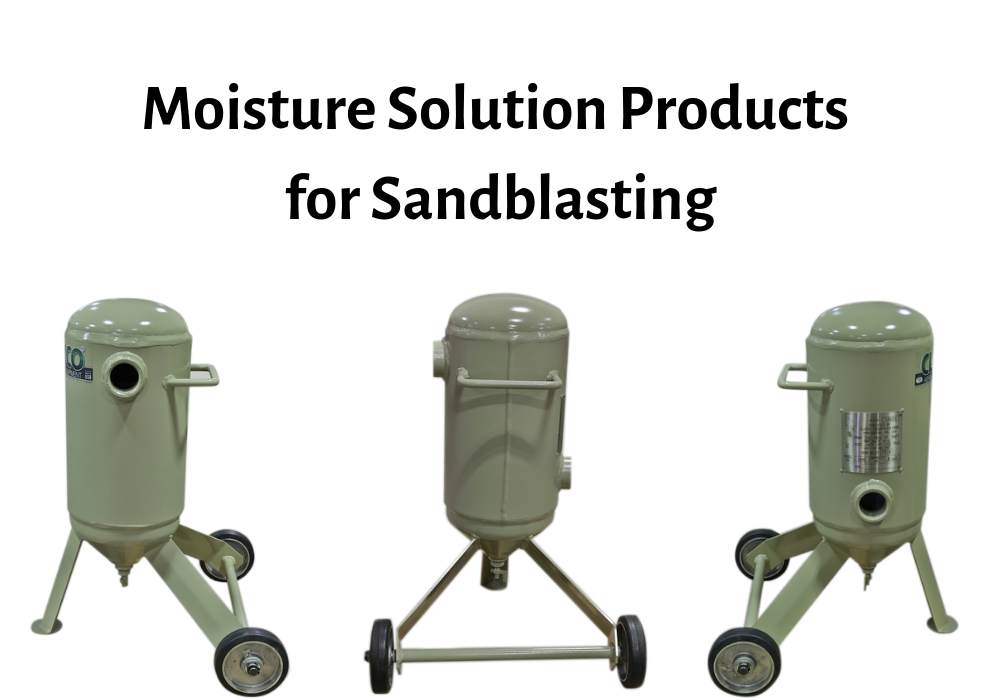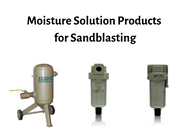The Effects of Moisture on Sandblasting
By on May 29th 2019
As the days get longer and the weather gets warmer, summer is within our grasps. While you might enjoy the sunny days, your blast machine might not. Warmer weather means increased humidity in the air. This causes the warm air produced from your air compressor to condense allowing moisture to enter your blast pot. As a result, the abrasive flow becomes uneven resulting in a blocked media flow.
Read on to learn more about the effects of moisture on sandblasting and how to fix this summer conundrum.
How Moisture Affects Sandblasting
Sandblasting is a method of surface preparation used to improve adhesion of a film to a surface. Improper surface preparation can cause premature coating failures with moisture being a common culprit. Therefore, it is recommended that operators use sandblasting machines when the steel temperature is 5 degrees higher than the dew point to prevent condensation. Unfortunately, you might not always be working in ideal conditions thanks to increased humidity.
There’s moisture in the air around us. As the temperature increases, so does the moisture level in the air. When you use your blast machine on a hot and humid day, the water vapor produced by your air compressor turns into droplets of water. These water droplets cause the abrasive to become wet. The abrasive flow, in turn, becomes uneven and can clog your machine. As a result, you use more abrasive than usual in order to correct the uneven flow. This makes a blasting job take longer and can waste abrasive.
Moisture is more than just an annoyance as it can damage your blast equipment and compromise the lifespan of coatings. Moist abrasive media can stick to the internal components of your sandblaster. Once it dries, it can become difficult to remove. Plus, condensation can cause flash rusting which results in coating failure.
Flash rust is rust that appears on metals quickly (within minutes or hours after cleaning) when a steel surface is exposed to contaminants such as moisture and humidity. Cool metal surfaces mixed with high humidity creates water droplets causing the metal surface to rust almost immediately after blasting. As a result, the coating does not adhere properly meaning the entire coating process might have to be repeated.

Moisture Solutions
While it’s impossible to completely rid the air of moisture, there are products available that can remove moisture from your setup. Dehumidifying the air helps to keep the level of moisture 5 degrees above the dew point to prevent condensation and flash rust. Below are two products that prevent moisture from clogging your machine.
The High Volume Coalescent Air Filter removes water from the compressed air supply for multiple blast machines and other air-filled tools requiring a dry, high-volume air supply. As moist air enters the filter, the fine-mesh stainless steel filter element causes the water vapor and oil to coalesce into larger drops and fall to the bottom of the filter. Plus, it works with both portable and stationary compressors.
The Moisture Separator prevents compressed air from being contaminated with moisture. This Clemco product has a ½ inch inlet and outlet along with a manual drain air filter water separator. Moisture won’t ruin your sandblasting this summer with this separator.
Sources:






